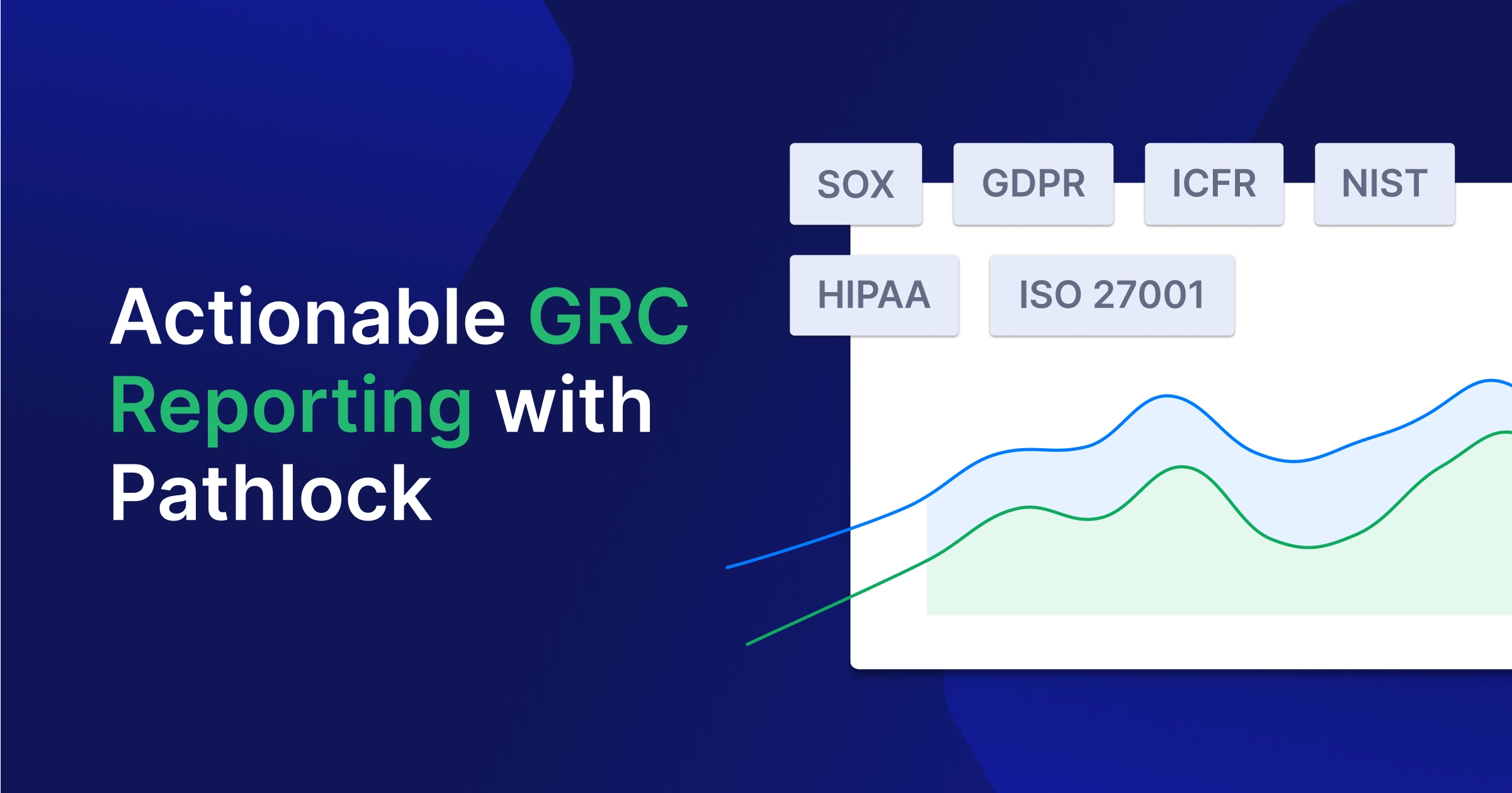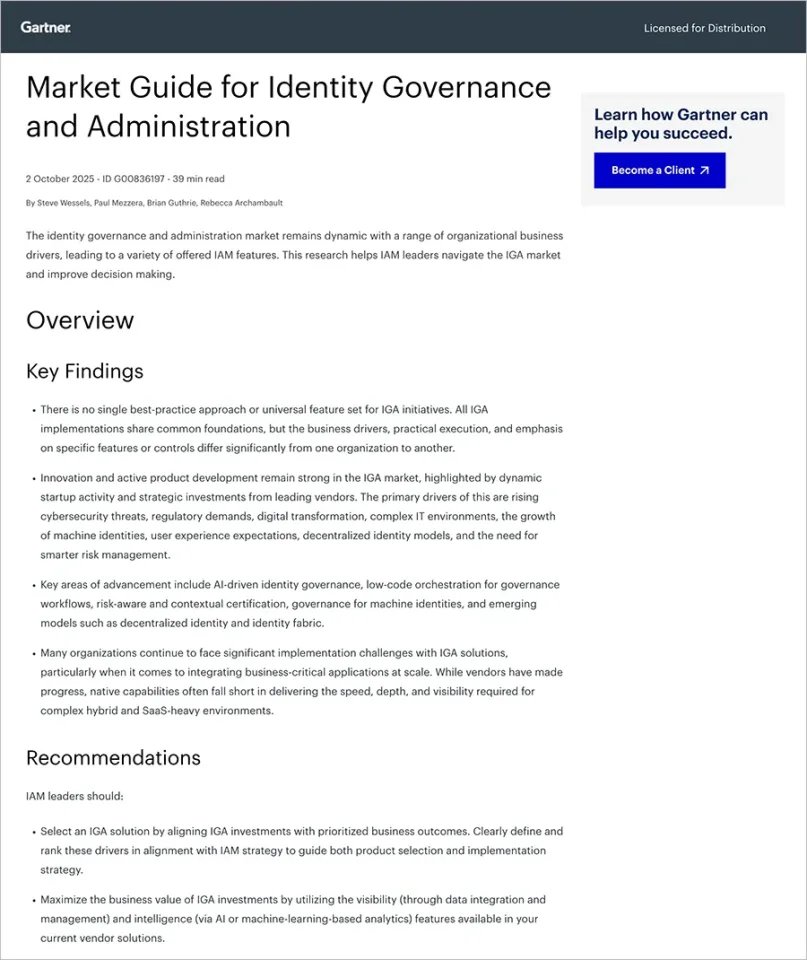A 2022 Deloitte survey revealed that 73% of organizations had a moderate to high level of dependence on cloud service providers, with predictions estimating this figure to increase to 88% in the coming years. This kind of increased dependence underscores the importance of effective third-party governance and risk management.
Identity Access Management (IAM), a process controlling access within an organization, is a key component of third-party governance. As third-party relationships become more complex, the need for oversight and risk management intensifies.
This post will explore the third-party lifecycle, outline best practices for risk management, and provide you with the essential knowledge needed to guard your organization against possible third-party risks.
What Is Third Party Governance?
Third-party governance involves the policies, procedures, and processes an organization uses to manage relationships with external entities such as suppliers, vendors, consultants, and service providers. These relationships, while crucial to the business operation, can introduce risks. A thorough third-party governance strategy minimizes harm and enhances business performance.
Third parties often require access to sensitive company information, making third-party governance a vital part of Identity Access Management (IAM). IAM ensures the right team members have access to the data they need when they need it. With third parties, this means controlling their access to company systems and data and preventing unauthorized data access that could lead to data breaches.
Understanding the Third-Party Lifecycle
Managing third-party relationships and mitigating associated risks requires a comprehensive understanding of their lifecycle. This lifecycle includes four main stages: identifying and assessing third-party needs, contracting third parties, overseeing third-party performance, certifying access, and concluding and reviewing relationships.
1. Identify and Assess Third Party Needs
The life cycle begins with identifying what a third party can offer, such as supplying critical products, unique services, or outsourcing specific tasks. After defining these needs, the organization evaluates potential third parties, considering their abilities, financial health, reputation, and alignment with the organization’s values and objectives.
2. Engage and Contract Third Parties
Once potential third parties have been assessed, the organization starts negotiations. This stage includes defining contracts, setting expectations, and establishing engagement terms. Contracts must detail each party’s duties, the relationship duration, dispute resolution methods, and termination procedures.
3. Monitor and Manage Third Party Performance
With the third party in place, monitoring and managing their performance is crucial. This stage involves comparing the third party’s performance against set benchmarks, ensuring contract compliance, and managing arising issues. Regular audits and reviews are necessary to check the third party’s compliance with regulatory and security standards.
4. Offboard and Review Relationships
The final stage, offboarding, marks the end of the contract or relationship with the third party. The offboarding process should secure data, maintain business continuity, remove access, and adhere to contract terms. After offboarding, the organization reviews the relationship to identify lessons learned and strategies for future third-party engagements.
This lifecycle exposes various risk points that need careful management. To navigate third-party governance and risk management successfully, consider the following management strategies:
- Enforce strict due diligence procedures during the assessment stage
- Develop clear and enforceable contracts
- Set up robust monitoring systems
- Conduct consistent audits and reviews
What Is a Third-Party Risk?
Third-party risk arises from an organization’s external relationships with vendors, suppliers, service providers, or consultants. These risks can disrupt operations, lead to financial losses, and damage an organization’s reputation.
Different Types of Third-Party Risks
Third-party risks differ based on the relationship, the third party’s role, and the organization’s sector. These risks include:
- Security Risks: Data security is a significant third-party risk. A third party’s access to sensitive company information increases the likelihood of a data breach, which can cause financial and reputational damage.
- Compliance Risks: Organizations must adhere to certain laws, regulations, and standards. Failure to comply can often lead to legal issues and penalties. Without due diligence, a third party’s compliance failure could extend to its clients.
Impact of Third-Party Risks
Third-party risks can significantly impact an organization. Security risks can cause data breaches, leading to the loss of sensitive information and privacy law violations. Compliance risks can result in regulatory penalties, litigation, and reputational harm.
Identifying Third-Party Risks
Identifying third-party risks is essential for risk management. This process includes performing due diligence before engaging with a third party, understanding their operations, and checking their data protection measures. Proper risk identification enables organizations to anticipate and mitigate problems, reducing these risks’ potential impact.
Practical Examples of Third-Party Risks
Third-party risks can vary based on industry and circumstance. For instance, a third-party payroll vendor gaining access to employee personally identifiable information (PII) could be a serious compliance risk. In the financial sector, a service provider’s data breach can expose customer data, leading to legal repercussions and a damaged reputation. Understanding these diverse risks aids in developing more effective governance and risk management strategies.
The Importance of Third-Party Risk Management
Third-party Risk Management (TPRM) is a vital process within third-party governance. It anticipates, assesses, and controls risks from external entities, protecting organizational interests and ensuring smooth operations.
Ensuring Regulatory Compliance
Non-compliance with regulations can lead to severe penalties, including fines and legal action. When partnering with third parties, ensuring they follow all applicable laws and regulations, from data privacy to international trade standards, is crucial. TPRM provides thorough compliance checks, helping you avoid legal issues and uphold your organization’s reputation.
Protecting Sensitive Data
Data breaches can harm your organization. Third parties often require access to sensitive information, making risk management essential. TPRM includes thorough assessments of third parties’ data security measures, such as their data handling procedures and breach response protocols. This safeguards your data and protects against potential breach impacts.
Enhancing Reputation and Trust
Your reputation is linked to your third parties’ actions. Any failure to meet ethical standards or any violations on their part could reflect poorly on your organization. TPRM enables you to monitor third parties’ adherence to ethical standards, protecting your reputation. Furthermore, demonstrating effective risk management builds trust with customers, investors, and regulators.
Improving Business Efficiency
TPRM also improves operational efficiency. Managing third-party risks mitigates disruptions and ensures smoother operations. The insights from risk assessments guide decisions about third-party engagement, leading to better resource allocation and optimized operations.
9 Best Practices for Third-Party Governance and Risk Management
As organizations increasingly rely on external partners, vendors, and service providers, the need for robust risk management practices has become paramount. Implementing these best practices helps organizations mitigate risks, ensure compliance, and maintain the integrity of their operations while leveraging the benefits of third-party relationships.
1. Assess and Prioritize Risks
This practice involves identifying and categorizing third-party relationships and evaluating financial stability, reputation, and security practices. Organizations should conduct thorough risk assessments to understand the potential impact of each third-party relationship on their business. This process helps prioritize resources and attention based on the level of risk associated with each third party. Develop a comprehensive risk assessment framework, gather relevant data on each third party, and use a scoring system to categorize risks. Regularly review and update these assessments.
Proper risk assessment allows organizations to focus their efforts on the most critical relationships, effectively allocating resources and minimizing potential negative impacts.
2. Set Clear Contracts and Ensure Compliance
This practice involves defining expectations, responsibilities, and compliance requirements in contracts and regularly reviewing them. Clear, well-structured contracts provide a solid foundation for managing third-party relationships.
Work with legal experts to develop standardized contract templates that cover all necessary aspects of the relationship, including performance metrics, compliance requirements, and termination clauses. Regularly review and update contracts as needed.
Clear contracts establish accountability, set performance expectations, and provide legal protection, reducing the likelihood of disputes and ensuring alignment between parties.
3. Implement Continuous Controls Monitoring
Continuous controls monitoring involves the ongoing assessment of third-party activities to ensure they align with established policies and procedures.
Use automated tools and systems to continuously monitor third-party activities, focusing on key risk indicators and compliance metrics. Set up alerts for any deviations from expected norms.
This practice allows for real-time risk management, enabling quick identification and response to potential issues before they escalate into significant problems.
4. Conduct Regular Security Assessments
Regular security assessments help ensure that third parties maintain adequate security measures to protect sensitive data and systems.
Perform periodic security audits, vulnerability assessments, and penetration testing on third-party systems that interact with your organization. Review their security policies and practices regularly.
These assessments help identify and address security vulnerabilities, reducing the risk of data breaches and other security incidents that could impact your organization.
5. Protect Data Privacy and Security
This practice involves establishing protocols for data sharing, encryption, and secure disposal to safeguard sensitive information shared with or accessed by third parties.
Implement strong data protection policies, use encryption for data in transit and at rest, and ensure third parties have proper data handling and disposal procedures in place.
Protecting data privacy and security is crucial for maintaining customer trust, complying with regulations, and preventing data breaches that could lead to financial and reputational damage.
6. Develop and Test Continuity and Incident Plans
This practice involves creating and regularly testing plans to ensure business continuity and effective incident response in case of disruptions or security breaches involving third parties. Develop comprehensive business continuity and incident response plans that include scenarios involving third-party failures or breaches. Conduct regular tabletop exercises and simulations to test these plans.
Well-prepared and tested plans ensure quick and effective responses to disruptions, minimizing their impact on business operations and stakeholders.
7. Promote Company-Wide Compliance and Training
This practice involves providing ongoing training on third-party risk management (TPRM) policies and procedures to ensure all employees understand their roles and responsibilities.
Develop comprehensive training programs that cover TPRM policies, procedures, and best practices. Conduct regular training sessions and provide easily accessible resources for employees.
Well-trained employees are better equipped to identify and manage third-party risks, ensuring consistent application of TPRM practices across the organization.
8. Maintain Documentation and Reporting
This practice involves keeping detailed records of all third-party relationships, risk assessments, and mitigation activities, as well as regularly reporting on the status of TPRM efforts.
Implement a centralized system for documenting all aspects of third-party relationships. Develop regular reporting mechanisms to keep stakeholders informed about the status of TPRM efforts.
Proper documentation and reporting ensure transparency, facilitate audits, and provide valuable insights for decision-making and continuous improvement of TPRM practices.
9. Adapt and Improve Strategies
This final practice involves continuously evolving and refining TPRM strategies based on lessons learned, emerging risks, and changes in the business environment.
Regularly review the effectiveness of TPRM practices, stay informed about emerging risks and industry trends, and be willing to adapt strategies as needed.
An adaptive approach to TPRM ensures that practices remain effective and relevant in the face of changing business landscapes and evolving risk profiles.
Optimize Your Third-Party Governance with Pathlock
Application and data access are critical components of a business infrastructure. Third parties are a favored way for hackers to gain access to their ultimate target because the third party may not have as robust cybersecurity tools and policies in place as the intended target.
Pathlock Application Access Governance (AAG) provides automated tools to assess application access risks, providing predictive security and a zero-risk approach to onboarding third-party users. Compliant provisioning ensures that user access meets the policies established to protect the organization from inadvertent access. Certifications ensure that user access continues to be needed and that access termination happens in real time, further protecting the organization from orphan accounts that hackers look for.
Being able to monitor 100% of transactions and the business process and IT general controls that are put in place to secure an organization helps to quickly identify exceptions and quantify the potential impacts of those exceptions. Pathlock Continuous Controls Monitoring (CCM) also monitors changes to master data and configurations to identify before and after states of changes, including data deletion.
These are just some of the ways that Pathlock can aid your organization in securing your digital landscape. Get in touch with us for more information or to schedule a demo.



